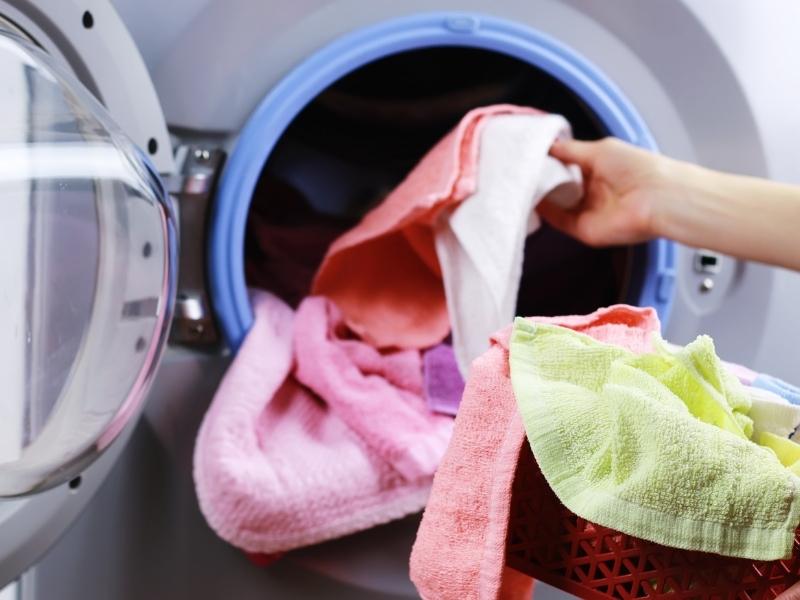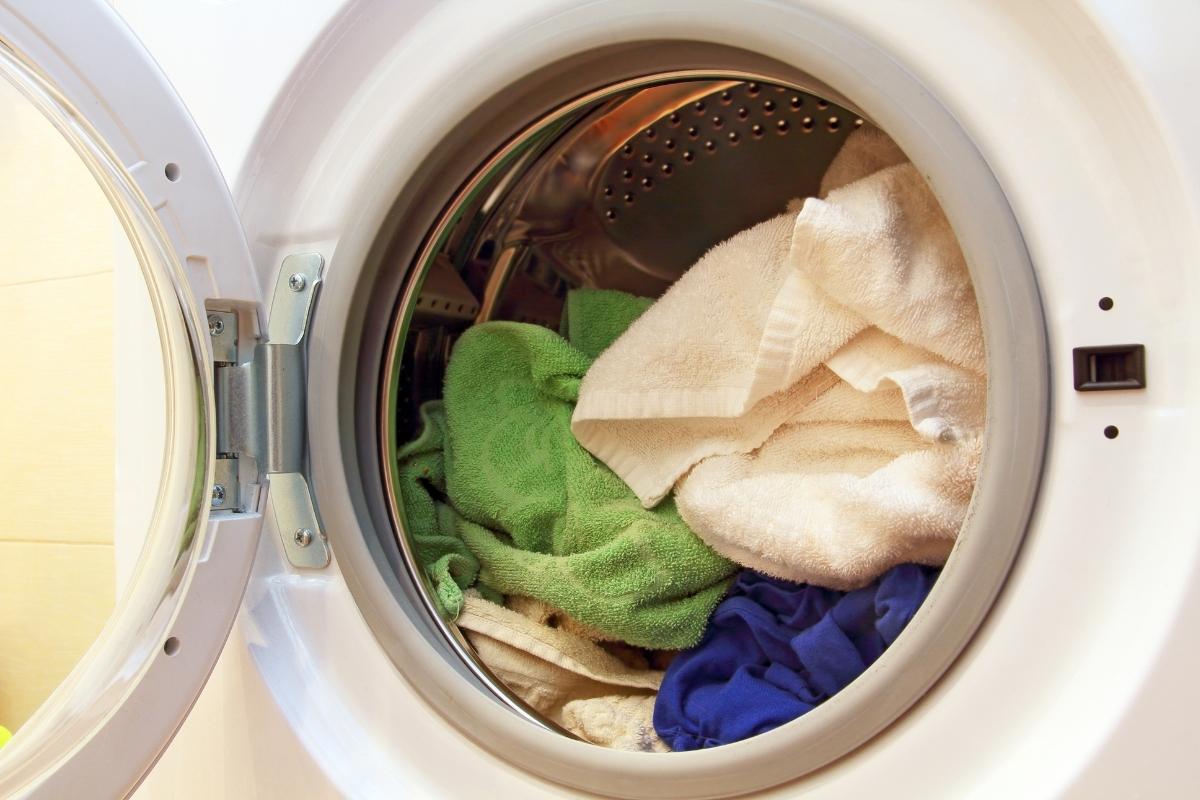Dry cleaning has long been a go-to solution for preserving the integrity of delicate fabrics and garments that cannot be subjected to regular laundering.
But when it comes to stain removal, many are left wondering: Is dry cleaning effective? In this article, we’ll delve into the capabilities and constraints of dry cleaning for stain elimination.
The Dry Cleaning Process Explained

Dry cleaning is not “dry” literally, as it uses a liquid solvent—typically perchloroethylene or “perc”—instead of water to clean clothes. The garments are placed in a machine resembling a traditional washing machine.
The solvent circulates through the clothing, dislodging dirt and some stains. Then, the solvent is drained, filtered, and recycled while the clothes are subjected to a rinse cycle with fresh solvent.
To better understand what happens to your garments once they’re handed over for dry cleaning, we’ve put together a detailed step-by-step guide outlining the entire process.
Understanding each phase of the dry cleaning process will demystify what goes on behind the counter and help you decide whether this method is effective for removing your specific type of stain.
- Step 1: Inspection and Pre-Treatment: Garments are initially inspected for stains and fabric type. Problematic stains are pre-treated with specialized solutions.
- Step 2: Loading and Solvent Introduction: Clothes are placed into a specialized machine, where a solvent—usually perchloroethylene or hydrocarbon—is introduced to circulate through the garments.
- Step 3: Agitation and Cleaning: The machine agitates the garments to loosen dirt and stains, aided by the solvent effectively.
- Step 4: Solvent Removal and Rinsing: The used solvent is drained, filtered, and recycled. Garments are then rinsed with fresh solvent to remove any remaining impurities.
- Step 5: Drying and Finishing: A high-speed spin cycle dries the clothes. Post-cleaning inspection is followed by pressing and finishing, preparing the garments for customer pick-up.
Types of Stains that Respond Well to Dry Cleaning

1. Oil-Based Stains (e.g., Grease, Cosmetics)
Oil-based stains are the most well-suited for dry cleaning. The organic solvents used in the process are excellent at dissolving oils, making lifting grease, makeup, or lotion stains from the fabric easier.
The solvent penetrates deep into the fibers, breaking down the oil molecules, which are then removed during the solvent extraction phase.
2. Ink Stains (e.g., Pen, Marker)
Ink stains can be a nightmare for most laundry methods, but dry cleaning offers a better chance of removal. The solvents used are often adept at dissolving ink compounds.
However, the success may vary based on the type of ink and how long it has been on the fabric. Pre-treatment may be used further to loosen the stain before the primary cleaning cycle.
3. Protein-Based Stains (e.g., Blood, Sweat)
Protein-based stains like blood and sweat can be tricky for dry cleaning, often requiring specialized pre-treatment to break down the protein molecules.
While dry cleaning may not guarantee full removal, the process usually performs better than traditional laundering for delicate fabrics susceptible to water damage.
4. Food and Beverage Stains (e.g., Coffee, Wine)
Dry cleaning is less effective against water-based stains, such as those from food and beverages. Coffee or wine stains may require pre-treatment and might not be fully removable through dry cleaning alone.
Nonetheless, the process can still be beneficial in preventing the stain from setting further into the fabric.
5. Mud and Dirt Stains
Dry cleaning can effectively remove general grime, mud, or dirt, particularly from delicate fabrics that can’t be machine-washed. The agitation phase in the dry cleaning process helps dislodge these particles while the solvent lifts them away from the material.
Limitations and Challenges

Water-based Stains
Water-based stains like juice, coffee, and blood can sometimes pose a challenge for dry cleaning. These stains often require specialized pre-treatment; even then, complete removal isn’t guaranteed.
Fabric Sensitivity
Certain fabrics like silk or cashmere may react unpredictably to solvents, making stain removal riskier.
Age of Stains
Older, set-in stains are generally more challenging to remove, whether you’re dry cleaning or using traditional laundering methods.
Color Fastness
The solvents used in dry cleaning can sometimes cause dyes to run or fade, particularly if the garment has not been color-tested.
Maximizing the Efficacy
To ensure that your garments come back looking their best, it’s crucial to know how to optimize the dry cleaning process.
Below are five comprehensive tips to help you achieve the most effective stain removal and garment care.
- Swift Response to Stains: Immediately treating any stain will significantly improve the odds of it being completely removed. Use a clean cloth to gently blot away as much of the spill as possible without rubbing it into the fabric.
- Clear and Detailed Communication: When you drop off your garments, specify any concerns, whether a particular stain, fabric sensitivity or even color fastness. The more information you provide, the better equipped the professionals will be.
- Select a Reputable Dry Cleaner: Not all dry cleaners are equal. Choose one with good reviews, especially when dealing with difficult stains or delicate fabrics. Quality service may come at a premium, but it’s often worth it for cherished or expensive items.
- Ask for Spot Testing: If you have any concerns about how the solvent will affect the color or texture of your garment, ask for a small, inconspicuous area to be tested first.
- Request Pre-treatment Services: Ask about pre-treatment options for stubborn or well-set stains. This may include specialized solvents or techniques to handle blood, wine, or other challenging stains.
Are There Alternatives to Dry Cleaning?

While dry cleaning is a go-to method for many, it’s not the only option for garment care and stain removal.
Explore the following alternatives to understand what other solutions may suit your needs.
1. Wet Cleaning
This uses water and mild detergents but avoids the mechanical actions that can damage delicate fabrics. It’s a more eco-friendly option but may not be effective for all stains.
2. Liquid Carbon Dioxide Cleaning
This uses pressurized CO2 as a solvent, making it another environmentally friendly alternative. It is effective on many stains but can be more expensive.
3. Synthetic Petroleum Cleaning
This method utilizes a hydrocarbon solvent as an alternative to perchloroethylene. It is less aggressive but may not be cleaned as thoroughly.
4. Siloxane-Based Cleaning
Siloxane solvents are silicone-based and are considered safer for the environment and the fabric. However, availability may be limited.
5. DIY Treatments
Simple home solutions like vinegar, baking soda, or gentle hand-washing can sometimes be effective, but they risk setting stains or damaging the fabric.

